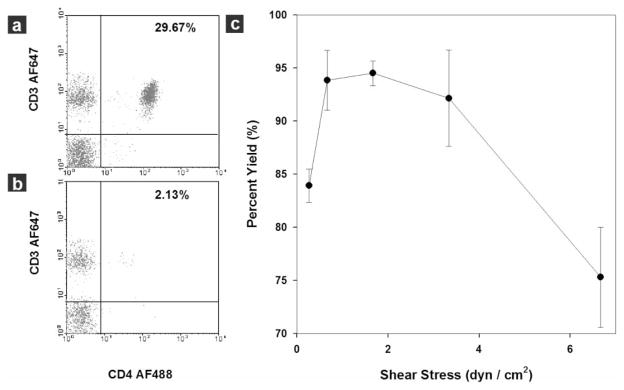Fig. 3.

Dependence of capture yield on shear stress in a linear device evaluated by flow cytometry using 10 μL blood samples from healthy subjects. (a) Flow cytometric analysis of a blood sample before CD4+ T cell isolation. The CD4+ T cells (CD3+CD4+) compose 29.67% of all lymphocytes. (b) Flow cytometric analysis of the same blood sample after CD4+ T cell capture in the device. The composition of the target cells in the sample flow through dropped to 2.13% of all lymphocyte population after device capture. Ten microlitres of whole blood were injected into the linear device at a shear stress of 1.7 dyn cm−2. Cells were acquired in the gated lymphocyte population, and the quadrants were set up with an isotype-matched control. (c) Capture yield at different shear stress calculated from flow cytometric analysis. Nearly 95% of the target cells can be isolated from whole blood using shear stress in the range of 1 to 3 dyn cm−2. The yield quickly drops to less than 85% out of this range. Each data point was repeated in at least 3 devices. The error bars represent standard deviations in measurements within each experiment.
